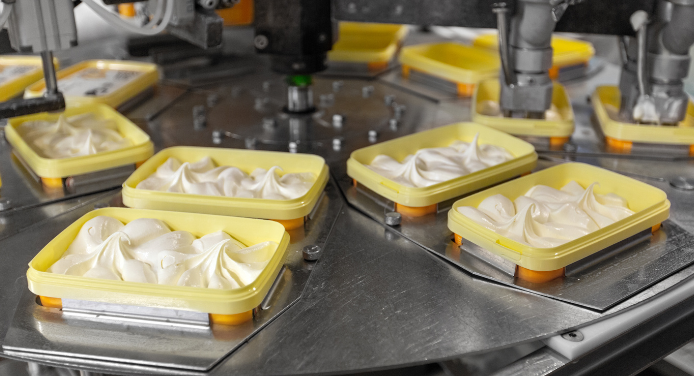There are many aspects and consequences of undergoing a crisis in your ice cream operation. Loss of market share, regulatory scrutiny, consumer illness, and even death are some major ones that come to mind. The beginning of any crisis management program is prevention and defense. A comprehensive microbial risk assessment must be conducted. This should be highly focused per defined risk. Other risks, such as terrorism, supply chain issues, and natural disasters, present a crisis that must be mitigated. However, the risk of pathogen contamination, such as Listeria monocytogenes, must have its own risk assessment and preventive control crisis management plan. This must be conducted by a team of subject matter experts (SMEs) with the experience and knowledge of mitigating all risks associated with pathogen product contamination.
Many areas require a deep dive into a pathogen risk assessment. The top programs include sanitation practices and SSOPs, an adequately designed environmental monitoring program, and your ingredient monitoring program. There are several key points to remember. The sanitation team must be given the appropriate time to conduct their assigned duties. Equipment needs special attention during sanitation, and if insufficient time is given, the manufacturing site is setting itself up for failure. This means a finished product pathogen contamination, usually an event, will occur.
Just some equipment that is notorious for harborage and providing a growth niche for Listeria include the somewhat portable ice cream cup filling machines, product pumps for dispersing added ingredients as well as moving ice cream, sharing of equipment from areas that are considered to be raw or less of a hygienic control and the upright units that freeze the cream.
One operation usually missing from sanitation programs is the profound cleaning aspect needed for all processing equipment. Listeria will work deep into equipment, which must be disassembled at some established frequency to destroy. Some equipment examples include most belt systems, wherever UHMW is bolted to equipment, and control panels, especially those beneath the product stream. These deep-cleaning frequencies will vary depending on the complexity of the equipment.
An SME in Listeria control and prevention is imperative to a successful deep cleaning regimen. Condensation will be another vector in moving Listeria around the facility. Control measures include assigning dedicated operators to inspect and remove condensate from equipment. Care must be taken to use disposable condensate rags or sponges so as not to spread any condensate-1.png?width=304&height=296&name=MxNS%20Whitepaper%20Crisis%20Management%20(1)-1.png) to other areas. To remove and replace the air, proper air handling systems cannot be over-emphasized here. Grease is a needed lubricant in many equipment functions.
to other areas. To remove and replace the air, proper air handling systems cannot be over-emphasized here. Grease is a needed lubricant in many equipment functions.
However, Listeria has been shown to survive, not grow, and hide in these lubricating systems. Maintenance personnel should be made aware of this possibility. Therefore, including these sites in your environmental monitoring systems must be done.
Your environmental monitoring program is your first defense for preventing Listeria harboring in your environment from entering your finished product. We will continue with this subject on the next crisis management ice cream blog and how to handle a crisis once the finished product has become an event with Listeria. Learn more about our Crisis Management and Dairy services and gain valuable insights by downloading our informative Crisis Management White Paper!
